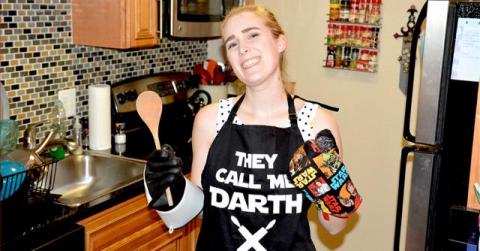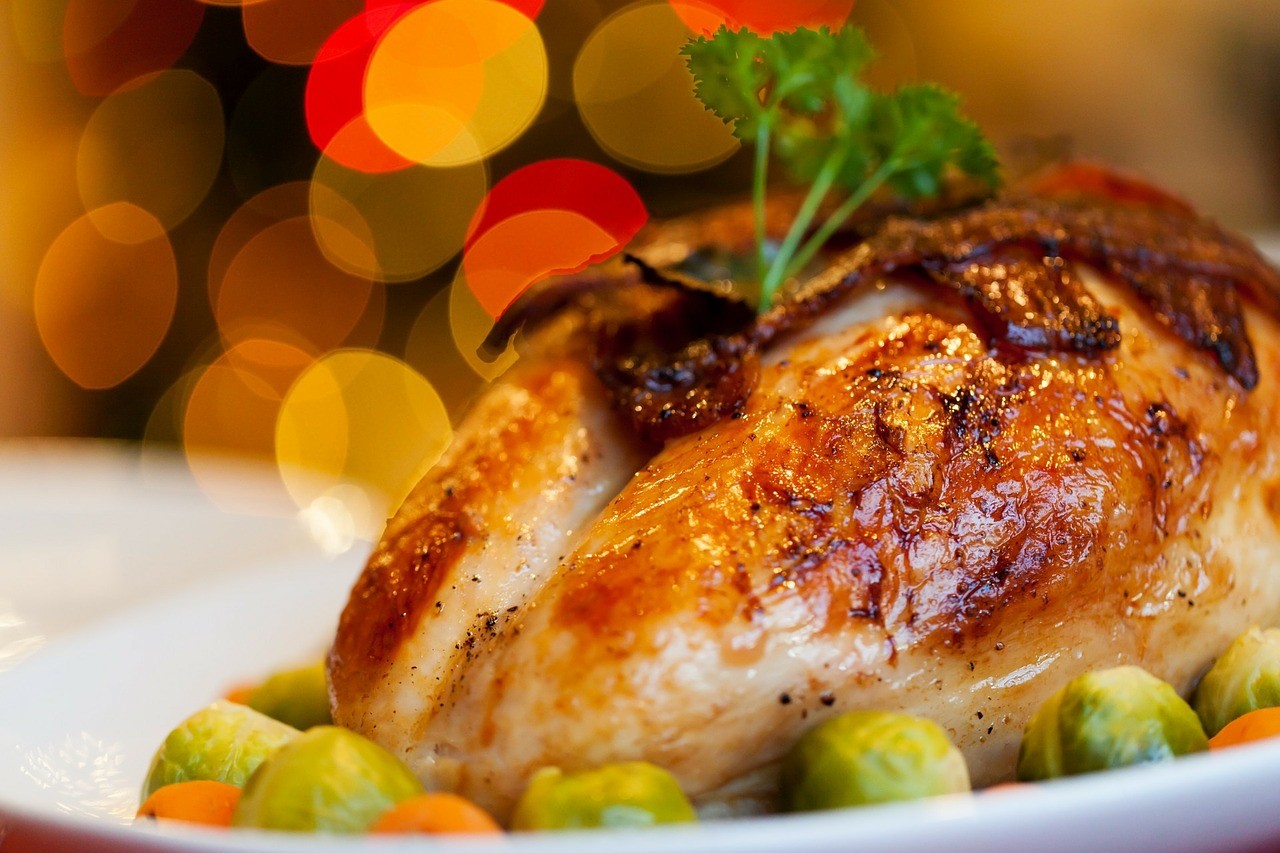Cooking With Science: Gobbling Up Thanksgiving
November 23, 2018
By Sarah Van Horn
Welcome to Episode 2 of Cooking with Science -- a thrilling journey that involves me, a terrible cook, learning fun science facts about food that will help us understand more about the way food works. With any luck, by the end of this series I will know so much about why food does what it does that my cooking skills will improve for the better.
As I’m sure my American friends will know, yesterday was the first of the major holidays that occur during months with freezing potential: Thanksgiving! If you’ve never celebrated Thanksgiving, it is basically a day where families and friends come together to watch football, drink, and eat until we are so full that we feel ever so slightly catatonic. Thanksgiving foods are also usually a special combo of warm, delicious, filling eats that we don’t make as a meal at any other time of the year.
There’s stuffing, potatoes, cranberry sauce, candied yams, pies, puddings, casseroles, and more. But of course the ultimate challenge of all Thanksgiving foods, and the one thing I’ve always been way too frightened to make myself, is … turkey.
Thaw the Beast
Okay, so step one of this process is to pick up a turkey, and as I don’t know the first thing about where to find a fresh turkey I went to the grocery store and bought a big old frozen one. According to the majority of my research, turkey is made up of about 60% water. If you got a frozen turkey like I did, this means that what you actually purchased is a small weapons-grade boulder that can be somehow turned into a hot, delicious holiday staple. Since, again, 60% of your turkey is a block of ice it needs days – yes days – to thaw out. Don’t be like the radio DJ I was listening to the other day who had to frantically dip her frozen turkey in and out of her hot tub for a couple of hours one year to try to thaw it out on Thanksgiving day. Switch that turkey to the fridge with plenty of time to spare. If you’re unsure about how long that is, I recommend this handy-dandy guide from FoodandSafety.gov.
Moist is the Word
Keeping your turkey moist is the key to its deliciousness. When you cook the turkey you are essentially breaking down the proteins that provide the majority of the structure to the turkey. When they start to fail in holding everything together the main thing that leaks out is water, since that’s what 60% of your turkey is made up of. Losing that moisture though, can make your turkey dry and less flavorful on its journey to being cooked all the way through.
If you got yourself a fresh turkey you are ahead of the game on this one, as freezing can rupture cells and allow moisture to escape. One source I found suggested injecting your recently unfrozen turkey with “broth and flavorings or to soak it in a salt-water bath for a couple of days in the fridge” to give it back some moisture. As I’ve never injected anything before, the idea of that made me a little nervous –how the heck should I know where to inject broth into something? So I went for option B of rehydrating my turkey with a saltwater bath, a technique also known as brining.
In one helpful article I found, Smithsonian.com paired up with Cook’s Illustrated to write about turkey and some other yummy Thanksgiving dishes. In that piece, Megan Gambino writes, “The editors of Cook’s Illustrated offer up a simple brine recipe. A 12- to 17-pound turkey should soak in 2 gallons of cold water and 1 cup of table salt for 6 to 12 hours. An 18- to 24-pounder should sit in 3 gallons of cold water and 1 1/2 cups of table salt, also for 6 to 12 hours. If you are making a bone-in turkey breast, it requires 1 gallon of cold water and 1/2 cup of table salt for a brining time of 3 to 6 hours.”
Brining for days after thawing for days seemed risky to me, so I followed the Cook’s Illustrated guide and went for brining my turkey the night before I was going to cook it and letting it soak in the fridge until the next day. It was on the smaller size and I figured it would get at least 8 hours in the brining mixture this way.
Different Cook Times for Different Parts
Unfortunately a turkey isn’t exactly a nice flat shape, so different parts of it are going to heat up in different ways in the oven. I read it mentioned in one or two sources that spatchcocking your turkey – a fancy technique in which you basically lay the bird flat – is one way to get around this. Here’s how Martha Stewart suggests going about that if you are interested in trying that out.
It seemed a bit too tricky for me so I went with rotating the bird in the oven every hour or so until it was fully cooked. The recommended temperature for cooking turkey is 325 degrees Fahrenheit or 163 Celsius, and most sources that I found said not to use a lid. As an additional way to add moisture, I remembered that my mom used to take the turkey out of the oven every once in a while and pour some of the moisture that had leaked out into the pan back on top of the turkey. I tried that out since it seemed to jive with the information I had found about keeping the turkey hydrated – I learned later that this technique is called basting (who knew?).
I got a meat thermometer to check on the internal temperature of my turkey. Exploratorium suggests that you, “stick a meat thermometer into the thickest part of the thigh without touching the bone. Take into account that the temperature will rise another few degrees after the turkey is removed from the oven, A 10- to 20-minute "standing time" allows the juices to settle, making the meat easier to carve. When ready to eat, the meat should register 180° F (82° C) and the stuffing 165° F (74° C).”
Cooking my little turkey without stuffing brought down the cook time down. I would recommend looking up the best cook time for you to help you determine approximately how long your turkey should stay in the oven. I used Allrecipies.com to find out how long to cook mine.
Turkey Talk
There are a million little details to this process and a lot different paths to success it seems. At the end of the day, my turkey was a little dry in a few places so I would probably cook it for a little less time or try spatchcocking if I did this again, but it was overall pretty darn good. The flavor was spot on and I think the only person who noticed the imperfections was me.
This was definitely something I didn’t think I could do, but I am glad that I gave it a go. I encourage you to get out there and try new things, you might surprise yourself.
From the Capitol family to yours, we hope everybody has had a very happy Thanksgiving!




